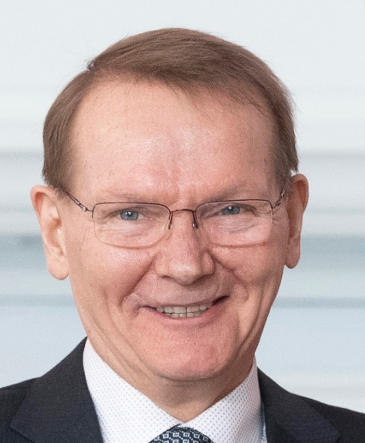
During his Zoom meetings, Dr. Pekka Sinervo sits in front of a photo of the ATLAS detector. The Professor of physics and researcher in experimental elementary particle physics at the University of Toronto took his backdrop photo a couple of years ago when he was at CERN in Switzerland, working with ATLAS, the largest particle detector at the Large Hadron Collider.
His work involves making particles collide and to do that, he uses the collider.
“I try to understand the behaviour of the particles — the things that make up protons and neutrons and a host of 300 other things that we call elementary particles,” Dr. Sinervo says of his research. “Most of them, and maybe all of them, fall apart after a certain time. Those times are usually extraordinarily short — like a trillion of a trillionth of a second.”
Given that, he must work with collaborators to create such particles and then build devices, such as the ATLAS detector at CERN, that can allow him to take high-energy particles and collide them.
His University of Toronto team has 30 people and is part of a larger Canadian group of 170 who are members of the ATLAS collaboration, which brings together more than 180 institutions from 40 countries.
Dr. Sinervo is also a “quark hunter” and was a leader in the team that discovered the most recent one — the “top” or “truth” quark. Quarks are a fundamental constituent of matter and form composite particles or hadrons. Dr. Sinervo, a member of the Order of Canada, was also involved in the Higgs boson discovery.
“Since we discovered the truth quark, my work has been measuring its properties, how it decays, how it gets produced, what its mass is,” he says. “It’s the heaviest known particle and it has properties that affect a lot of things. The Higgs boson, for example, interacts most strongly with the top quark.”
Needless to say, his computer use is heavy and he’s been involved with software development and large-scale processing. He was heavily involved in the genesis of SciNet, a supercomputer centre at the University of Toronto. Today, the computer system he uses is 600,000 times more powerful than the ones he helped build 30 years ago.
“That’s an amazing change,” he says. “We slaved over those computers for years and those machines now are like the abacus.”
My biggest challenge is… “keeping up with technology. Technology is evolving rapidly so one has to keep one’s ear to the ground to be able to anticipate what’s happening so you can be at the forefront. We constantly have to think about what changes in data processing are just around the corner.”
What did you have to come to terms with? “I’ve had to accept that it takes a lot of effort to make things like the Alliance [and formerly] Compute Canada a reality. It’s a slow process, you have to work hard in terms of creating collaboration and common cause.”
What is your message to others? “Be ambitious and keep your collaborators close.”